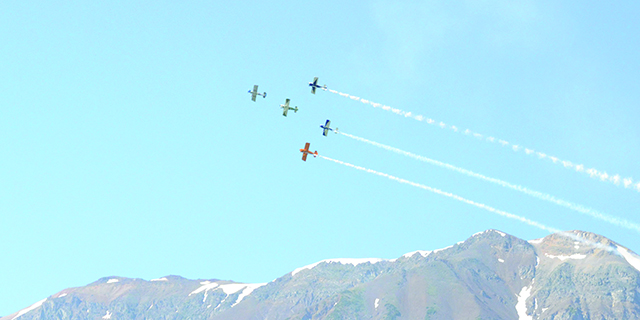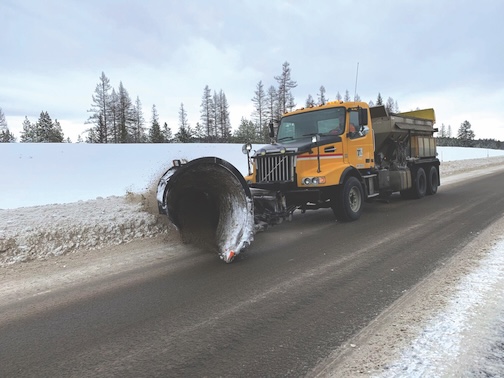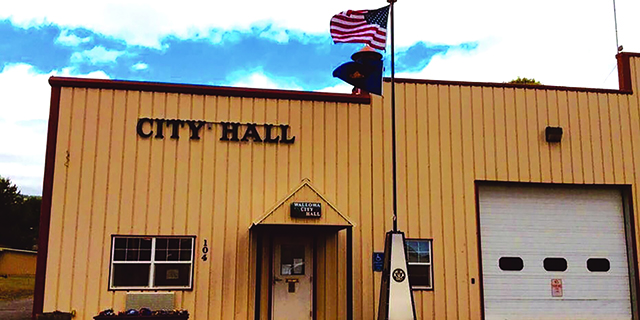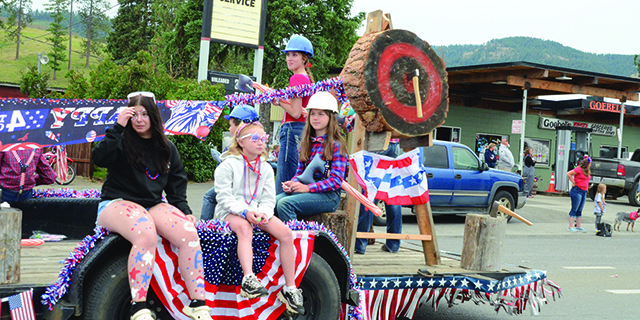Whole lotta bull will bust out the gates at CJD
Published 2:48 pm Monday, July 20, 2015

- Kathleen Ellyn/ChieftainTime to climb the fence! Bulls from the Growney Brothers Rodeo Company run down the lane between pens during feeding in Joseph.
You can’t tell by looking at a bull as he lounges in the pen what sort of a ride he’ll be. Though, big globs of mud on his horn tips from forking the dickens out of his hay pile as a way of showing off to other bulls might give you an idea of how he’ll react when you hit the dirt.
But out in the pens behind the Harley Tucker Memorial Arena in Joseph the biggest, baddest-looking, hook-horned, brindle-hide Brahma bull in the pen, the veteran of three rodeo finals, is a big lover and likes his head scratched.
Trending
That big brindle bull is Glory Days, a Growney Brothers Rodeo Company bull.
John Growney, of Red Bluff, Calif., has been supplying the bucking stock to the Chief Joseph Days Rodeo for 22 years and he knows his business. His company is, he says, in the top 10 of the 70 contractors in the nation. He says this with quiet confidence and hopes you’ll check that statement out for accuracy.
His secret to success is his partnership with horse breeder Tim Bridwell and bull breeder Don Kish.
“Nobody can handle bulls and horses and the business,” Growney said. “It’s too much. Other companies are starting to see that this way (partnership) is a good business model.”
That big bad three-time National Finals bull, Glory Days, is a Kish bull.
And he’s a bull that cowboys love to draw, Growney said.
Trending
“He bucks. But he’s gentle. He’s rider-friendly and won’t try to hurt you when he’s done. And he bucks good. The cowboys know when they ride him they might get Number One,” he said.
Glory Days bucks well enough that he bucks most of them off, but when they stay with him — which happens about three times a year — a cowboy can get a score in the 90s. Some cowboy at Chief Joseph Days might just ride on a lucky day and that will be something to see.
It’s no accident that Glory Days is so good. He was bred to buck. And that’s where that partnership Growney is so proud of comes in.
“The bulls we have today are a breed of their own — a bucking bull,” Growney said.
Glory Days breeding is royal. His daddy was a big red bull called West Coast Offense who went to the National Finals Rodeo. His mother was a former roping calf. Not bred to buck, but mother to several good bucking bulls so there was some latent talent there. No wonder Glory Days has been to the finals three times so far. He’s an “old bull” at 8 years old, but he could go to the finals again, Growney said.
If a contractor wants to field a bull like Glory Days he’s got to study the breeding art, Growney said.
Back in the day, when bull riding started out as an event, contractors would just show up at auctions and buy the big crossbred Brahma bulls and see if they’d buck. But then the beef industry changed, breeding changed, and you just couldn’t find those big bucky crossbreds anymore.
Now, Growney said, bucking bulls are as pedigreed as racehorses.
Bull breeder, Kish, wasn’t around the day of the interview so horse breeder Bridwell explained bull royalty this way: “There are two bloodlines in particular that most good bulls descend from,” Bridwell said. “Oscar’s Velvet is the bull that started the Kish bloodline back in 1984-85 and now his line is very sought-after.
“Charlie Plummer created the other most popular line, descended from a spotted bull. You see a spotted bull in the arena it’s most likely Plummer-bred.”
Glory Days is Kish-bred. That bull with the big globs of dirt on his horn — looks Plummer-bred to this reporter.
Spectators at Chief Joseph Days will get their chance to guess parentage this week as Growney and company’s good bulls bust out the gate. Keep your eye out for a big brindle bull and expect a really good score — or a cowboy in the dirt.









